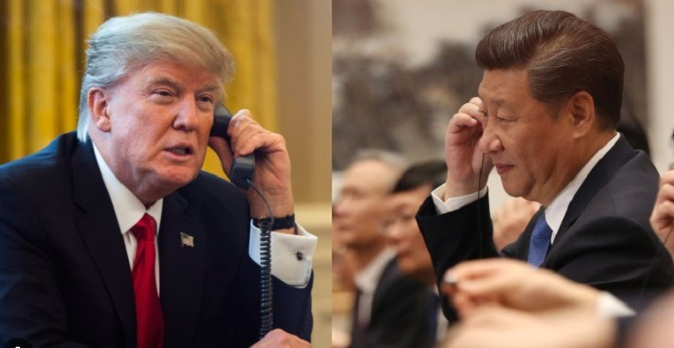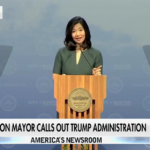Presidents Donald Trump and Xi Jinping finally had that call.
The chat means the fragile trade truce reached in Geneva lives another day, even though it’s unclear what actual progress the two sides made.
Trump signaled a dispute over shipments of rare earth magnets, used extensively in electric motors and hard-disk drives, to the US was resolved. Read more about the call here and here’s a handy explainer on those critical minerals.
The two sides agreed to more talks and mutual visits but few specifics surfaced. Trump also tried to dispel worries about his administration’s plan to revoke some Chinese student visas, saying: “It’s our honor to have them.” Read about the ways Trump is going after international students here.
China struck a somewhat testy tone afterward, saying the American side initiated the call. It also suggested Xi cautioned Trump on Taiwan after reports the US would step up arms shipments to the democracy. Read about China placing bounties on Taiwanese cyberwarriors this week here.
That Xi took the call at all was mildly surprising since he prefers to let underlings sort out details in negotiations and then put a bow on the final pact for the cameras.
The reason he agreed to chat probably comes down to worries over the economy. This week Morgan Stanley warned that China’s growth may “decelerate quickly” in the second half of the year. Read how a private factory gauge plunged to its weakest since 2022 here.
The economic worries are a reminder that for all the talk that Xi holds the cards in the trade dispute and China can just find other markets, both sides have a massive interest in clinching a deal.
The thing is, that is going to be difficult and not just because trade
negotiations are intrinsically complicated. During Trump’s first term, the US-China combat lasted nearly two years from first shot to peace treaty.
The larger issue is that the call did nothing to resolve the gaping divide between the two sides: the tech rivalry.
Underscoring that point, the same day Xi and Trump chatted, Commerce Secretary Howard Lutnick called for more enforcement of export controls to stop the Asian country from stealing tech that
could lead to advances in areas like AI and aviation.
Interestingly, Lutnick will be part of the US team during the next round of discussions, which could mean Trump is putting those export controls on the negotiating table. Though it could also mean Lutnick’s hardline position gets a bigger platform.
If Trump is open to talks on tech curbs, that’d be a big win for China because its main beef with Washington is precisely what Lutnick was talking about. Beijing’s most strident complaints lately have
been about issues like guidelines on chip export controls and curbs on chip design software sales. Read about China’s top diplomat saying as much to the new US ambassador in Beijing here.
Even China’s remonstrations about the student visa issue were related to tech because many of those people are engaged in advanced research in top universities.
One of the big problems for the US is China’s export-heavy economy. Beijing has made elevating the importance of the consumer a bigger priority this year but immediate progress has been halting. (Though the latest Mission Impossible movie is a big hit in China.)
Beijing is convinced its future remains in manufacturing and exports, and Xi is insisting that his nation pursue innovation to ensure global competitiveness.
Recently China’s edge in EVs has become obvious, with BYD topping
Tesla in sales. Then there was DeepSeek showing off China’s chops in large language models, and the performance of Chinese-made fighters in Pakistan’s confrontation with India.
Recently, in an event that was probably mostly noticed by phone nerds, Huawei rolled out a foldable phone that ditched the Android operating system in favor of its in-house mobile platform — a project it has worked on for years. Read more about the HarmonyOS here.










